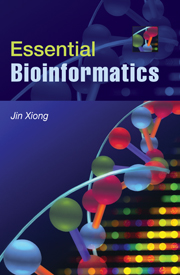Book contents
- Frontmatter
- Contents
- Preface
- SECTION I INTRODUCTION AND BIOLOGICAL DATABASES
- SECTION II SEQUENCE ALIGNMENT
- SECTION III GENE AND PROMOTER PREDICTION
- SECTION IV MOLECULAR PHYLOGENETICS
- SECTION V STRUCTURAL BIOINFORMATICS
- 12 Protein Structure Basics
- 13 Protein Structure Visualization, Comparison, and Classification
- 14 Protein Secondary Structure Prediction
- 15 Protein Tertiary Structure Prediction
- 16 RNA Structure Prediction
- SECTION V GENOMICS AND PROTEOMICS
- APPENDIX
- Index
- Plate section
- References
14 - Protein Secondary Structure Prediction
Published online by Cambridge University Press: 05 June 2012
- Frontmatter
- Contents
- Preface
- SECTION I INTRODUCTION AND BIOLOGICAL DATABASES
- SECTION II SEQUENCE ALIGNMENT
- SECTION III GENE AND PROMOTER PREDICTION
- SECTION IV MOLECULAR PHYLOGENETICS
- SECTION V STRUCTURAL BIOINFORMATICS
- 12 Protein Structure Basics
- 13 Protein Structure Visualization, Comparison, and Classification
- 14 Protein Secondary Structure Prediction
- 15 Protein Tertiary Structure Prediction
- 16 RNA Structure Prediction
- SECTION V GENOMICS AND PROTEOMICS
- APPENDIX
- Index
- Plate section
- References
Summary
Protein secondary structures are stable local conformations of a polypeptide chain. They are critically important in maintaining a protein three-dimensional structure. The highly regular and repeated structural elements include α-helices and β-sheets. It has been estimated that nearly 50% of residues of a protein fold into either α-helices and β-strands. As a review, an α-helix is a spiral-like structure with 3.6 amino acid residues per turn. The structure is stabilized by hydrogen bonds between residues i and i + 4. Prolines normally do not occur in the middle of helical segments, but can be found at the end positions of α-helices (see Chapter 12). A β-sheet consists of two or more β-strands having an extended zigzag conformation. The structure is stabilized by hydrogen bonding between residues of adjacent strands, which actually may be long-range interactions at the primary structure level. β-Strands at the protein surface show an alternating pattern of hydrophobic and hydrophilic residues; buried strands tend to contain mainly hydrophobic residues.
Protein secondary structure prediction refers to the prediction of the conformational state of each amino acid residue of a protein sequence as one of the three possible states, namely, helices, strands, or coils, denoted as H, E, and C, respectively. The prediction is based on the fact that secondary structures have a regular arrangement of amino acids, stabilized by hydrogen bonding patterns. The structural regularity serves the foundation for prediction algorithms.
- Type
- Chapter
- Information
- Essential Bioinformatics , pp. 200 - 213Publisher: Cambridge University PressPrint publication year: 2006



